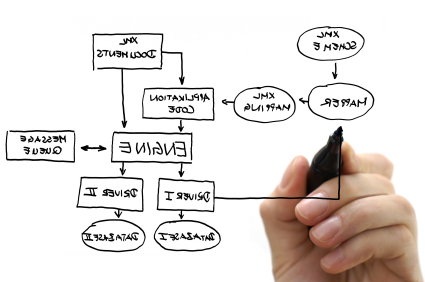A recent story in Symmetry Magazine covered a move by physics collective Fermilab to engage in a process of “physics by hand.” Organizers of the lab’s biweekly forum on Large Hadron Collider physics decided last fall to forgo PowerPoint presentation talks and instead have discussion leaders present their material using low-tech whiteboards and markers.
Talks that were once linear, one-way presentations of information have been transformed into dialogues that engage the entire group. Professor Andrew Askew, associate professor of physics at Florida State University and co-organizer of the forum, explained, “We all feel inundated by PowerPoint… We wanted to draw out the importance of the audience.”
Not having PowerPoint as a crutch to rely on can be good for presenters too: speakers themselves must find ways to make deliver their content in a way that connects with the audience instead of letting the slides do all of the work. Askew noted, “With only a whiteboard, you have your ideas and a pen in your hand.”
Moving to a more non-linear presentation style forces the speaker to focus their presentation more on the connections between the concepts rather than a predetermined chain of material. Askew explained, “The participants go further off script, with more interaction and curiosity.”
Physicists are not alone. Leaders such as Amazon's Jeff Bezos, Yahoo's Marissa Mayer, and LinkedIn’s Jeff Weiner have eliminated PowerPoint from their meetings as well. And Steve Jobs once remarked that anyone who knows that they are talking about does not need a PowerPoint.
To be sure, eliminating PowerPoint does free discussions from forced linearity, but doing so creates another problem. For many years, researchers in the fields of neuroscience and psychology have found that learning and retention of information is drastically improved when we interact with visuals rather than only words. Rather than simply banning PowerPoint, a better solution is a tool that blends a nonlinear mind-mapping approach with access to critical visual aids.
There are no simple solutions to the complex problems the nuclear physicists at Fermilab grapple with, but it is clear that demand for a visual discussion app is growing.
*Photo: Peter Darling TypePad
At Vimodi, we are developing technology that helps users have a more engaging, responsive and effective visual discussions and dialogues. Vimodi enables visual mobile discussions for better engagement, motivation, and creativity in meetings and daily communication. Try Vimodi App.


